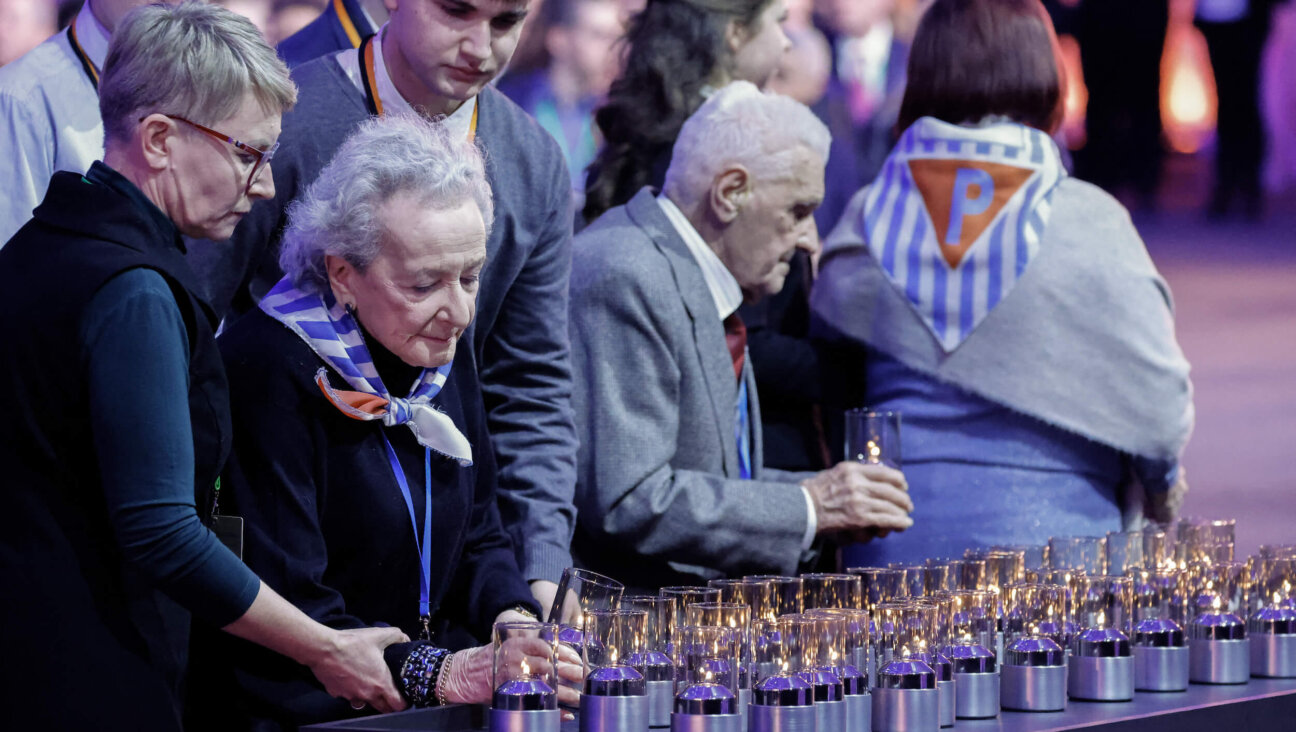Hamas is not as popular in Gaza as it seems. But Israel’s tactics will ensure their survival
Israel’s response to the Oct. 7 terror attacks has killed thousands of civilians, and may strengthen the terrorist group
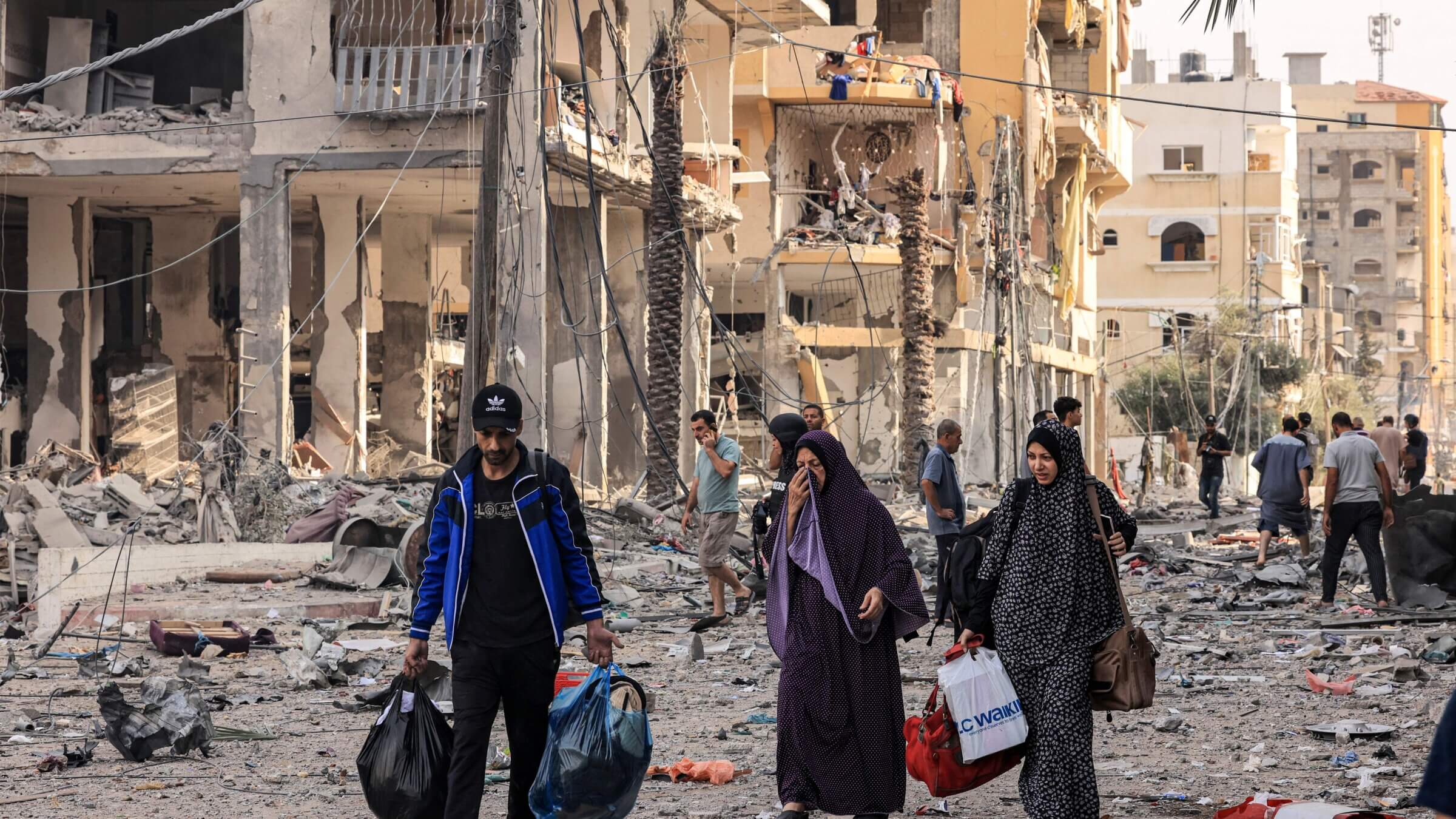
Palestinians leave al-Karama neighbourhood in Gaza City to safer areas on Oct. 11 Photo by Mahmud Hams/AFP via Getty Images
As battered Gazans emerged from their destroyed homes in northern Gaza after the temporary four-day cease-fire took effect, a Palestinian reporter working for Hamas’ own TV station ironically captured dozens of resentful civilians cursing Hamas and accusing the group of having destroyed their lives.
This isn’t an isolated example.
In a short BBC clip showing the aftermath of a deadly Israeli strike that killed civilians in Gaza, a grieving Palestinian mother screams in agony, “This is all because of Hamas’ dogs.” A nearby man, likely a family member, can be heard quickly telling her, “Enough!” He places his hand on her mouth to prevent her from saying more.
Many Palestinians are either reluctant or fearful to express what they are honestly thinking about Hamas, the Islamist group that has ruled Gaza since 2007 and perpetrated the Oct. 7 terror attack on Israel. The massive Israeli bombardment throughout the Gaza Strip killed hundreds of people daily, many of whom were neither Hamas members nor supporters. Most, including my family members, are experiencing blowback for actions they didn’t commit, plan or endorse.
Immediately after the horrific Oct. 7 attack on Israeli towns and kibbutzim, I encountered dozens of social media posts from Gazans who expressed immense concern, fear, horror and worry about what this event would unleash. Hundreds condemned Hamas’ “adventures” and reckless disregard for the well-being of its people in the coastal enclave. They considered the attack a suicide mission that would inevitably result in the total and utter destruction of the strip.
Unfortunately, so far their fears have proven accurate.
After the first massive Israeli strike on the Jabalia refugee camp in Gaza, another short video captured a grieving man’s defiant outburst against Hamas during a press conference by one of the group’s spokespersons, blaming the group for what has befallen the coastal enclave.
“Why are they hiding amongst the people?” asked a battered man inside a Gaza Hospital on Aljazeera’s live Arabic news channel, referring to Hamas fighters. “Why don’t they go to hell and hide there?” The interviewer quickly cut him off.
Hamas is deeply unpopular with the people of Gaza. But the way that Israel is waging war in the strip will ultimately make things much worse for both Palestinians and Israelis long-term.
How Hamas uses the Gaza Strip

While ignoring its own people, Hamas has managed to insulate itself and its patrons from the impact of Israel’s 16-year-long blockade. There is rising anger among Gazans at this reality, as well as a rejection of Hamas’ methods, beliefs, ideologies and governance of the strip.
A recent popular Facebook post by a frustrated Gazan inside the strip lambasts the “Iranian-back armed factions” led by Hamas. “It doesn’t seem that we as civilians are remotely considered in their plans or calculus,” he adds, saying that militants “depict themselves as being perfectly fine” with their tunnels and well-prepared supplies and stockpiles while no such preparations were put in place to support the civilian population’s needs.
The post called for the release of all hostages in exchange for the complete withdrawal of IDF troops, stressing that the sanctity of Gazans’ lives is more valuable than prisoner swaps or Hamas’ ideologies and beliefs.
Right before Oct. 7, a survey by the Arab Barometer found a continuing decline in Gazans’ trust in Hamas’ governance along several metrics. Sadly, the intensity of Israel’s military operation is overshadowing dissenting voices, both those that existed before Oct. 7 and those that are increasing as a result of the destruction of Gaza.
Interestingly, Hamas enjoys much more support among the West Bank’s population despite lacking a robust presence in the territory. Resentment of settler violence, Israel’s occupation and the impotent Palestinian Authority likely fuel support for the violent resistance represented by Hamas’ ideology and tactics.
But despite the widespread suffering, the West Bank is light-years ahead of Gaza in terms of quality of life. The violent reality that Hamas rule would bring would seriously reverse support for the group.
Something that makes it difficult to assess Palestinian public opinion, including in Gaza, is that the concept of “resistance” enjoys widespread support, even if people dislike Hamas’ governance and practices. Hamas exploits this, and hides its failures behind its “acts of resistance,” which makes it possible to claim any “achievement.”
This is precisely why Hamas launched its attack on Oct. 7. The attack was not about settler violence in Jerusalem or seeking to break the blockade. It was about stemming the tide of resentment and discontentment.
A recent poll suggests that Hamas’ gambit may have worked. Evidence suggests wide Palestinian public support for the Oct. 7 attack. Despite the severe limitations of this survey, the impending release of 150 Palestinian prisoners is already being spun by Hamas as a victory despite the unbearable death toll and cost.
Top Hamas leader Khalil al-Hayya told The New York Times — from Qatar — that the group’s goals are not to “run Gaza and bring it water and electricity,” or to “improve the situation in Gaza,” but rather to put the Palestinian cause back on the map.
In other words, Hamas aims to use Gaza as a citadel from which it can drag 2.3 million people along in a “resistance” project that entails continuous and permanent war and violence.
The people of Gaza know this. Poor and working-class residents of the coastal enclave have paid the ultimate price in blood, misery, suffering and hardship without any hope for a prosperous and peaceful future. Amid the devastation of the IDF’s response to Oct. 7, more Gazans have been criticizing Hamas’ actions and hold on power.
Thousands took to the streets in Gaza this summer to protest against Hamas’ rule and their miserable living conditions, a rare display of defiance. The Islamist group quickly quashed the protests, arresting and beating hundreds of people. This is the group’s playbook whenever civilians demand improvements to dire living conditions. And yet there are still people daring to speak out.
I know Gaza well, and have a deep understanding of its population. The aforementioned anecdotes, my lived and professional experiences, friends and family currently in the strip, Palestinian social media, Hamas’ own statements, multiple past protests and the group’s brutal rule clearly demonstrate deep unpopularity and disdain for Hamas, both now and before Oct 7.
The unfortunate truth, however, is that the way Israel is waging this war will prove ineffective in achieving long-term and sustainable security. It is ultimately planting seeds for further violence, extremism and hate while also making it difficult for anti-Hamas activists and the general Gazan population to express what they truly feel and to challenge the Islamist group’s rule.
A counterproductive operation
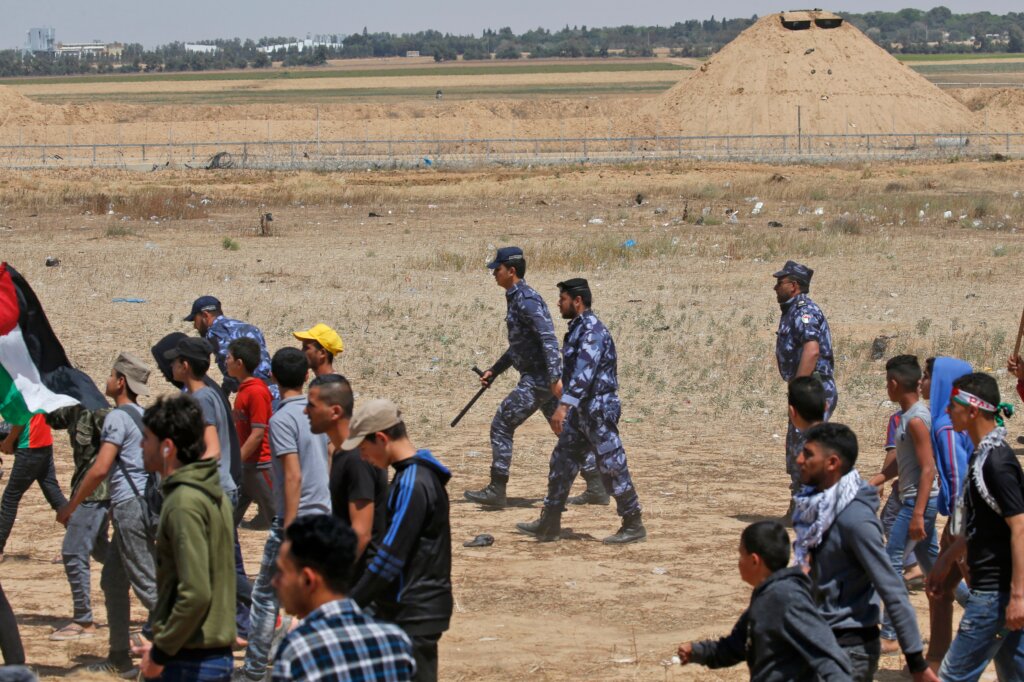
Many Gazans blame Israel for their displacement from the land their families lived on for generations — about 70% of Gazans are refugees or descendants of refugees from the 1948 Nakba — as well as much of their current predicament. But they have no illusions about Hamas’ nefarious intentions, incompetence and selfishness. And they see the Israeli blockade as enabling Hamas to conveniently absolve itself from its responsibility to govern effectively and provide for their needs.
If Israel were to wave a magic wand over Gaza and somehow dislodge Hamas and remove its grip on power without civilian casualties, I am willing to bet my life that at least half of the strip would welcome such a move, and yell in unison: “Do us a favor!”
However, I am not optimistic that we are on the course to achieving anything close to that. Israel’s past political decisions, poor strategic choices and the conduct of the current military operation in Gaza point to an uncomfortable and deeply disturbing inevitability: Hamas will not be eradicated. And the group will survive as a cohesive entity, ideology and component of the Palestinian national project.
Israel’s military actions in response to the Oct. 7 attack have already killed over 14,000 people. Many bodies, like that of my dad’s youngest brother, uncle Riyad, 57, are long buried under rubble. My uncle was killed in a massive raid that destroyed our entire neighborhood. His body was only extracted from the rubble after six days. Nothing and no one has been spared, including aid workers, many of whom are in southern Gaza.
The unprecedented death toll and destruction have expended most of the international political capital that the Israeli government garnered after Hamas’ horrendous attacks. The IDF estimates its operation inside the strip has killed up to 2,000 Hamas fighters (not including Hamas and other groups’ members killed on Oct. 7) out of a force it estimates to be around 30,000 strong — a shockingly low number of combatants killed relative to dead civilians. Former CIA director and experienced counterinsurgency commander Gen. David Petraeus cautioned that “there’s got to be a real concern about the Palestinian people in Gaza,” especially as the IDF gears up for a ground operation in the south of the strip.
Instead of carrying out a targeted, low-intensity, long-term operation that could sustainably reduce Hamas’ military capabilities and create conditions to introduce a new administration in Gaza, the massive bombardment and destruction throughout the strip have set the scene for what will be one of the most complicated predicaments that Israel has ever found itself in: ambitious, difficult-to-achieve tactical and strategic goals, continued occupation of a ruined Gaza, and most importantly, a highly resentful and deeply antagonistic Palestinian population that will be even more hostile to Israel and more likely to embrace violence as a strategy.
Hamas is resilient
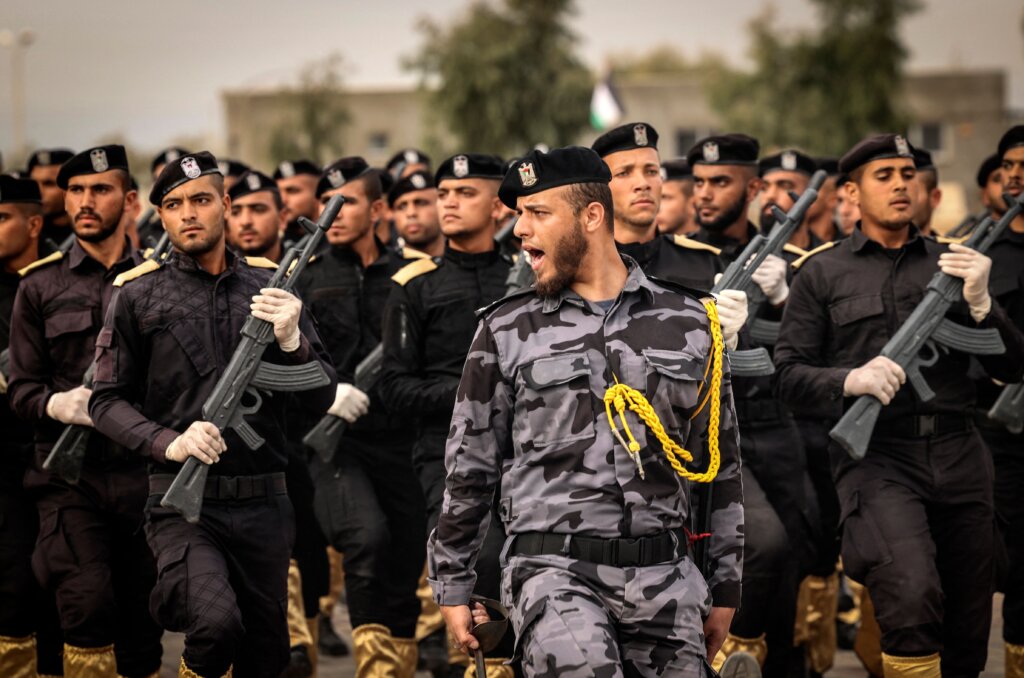
Multiple analysts and observers, including an unnamed senior U.S. defense official, have stated that Israel’s campaign thus far hasn’t even “come close” to eradicating Hamas’ mid- and senior-level leaders.
Unlike other Islamist groups, the official argued that Hamas has a “deeper bench of experienced midlevel military leaders,” in essence making it impossible to destroy the group by eliminating individual commanders.
As a child growing up in Gaza, I remember vividly when Israel assassinated founding and senior Hamas officials, including people like Salah Shehade, Ahmed Yassin and Adnan al-Ghoul. The killing of these leaders was thought at the time to be a fatal blow to Hamas.
Instead, the group’s arsenal, capabilities, political clout and position grew exponentially and expanded beyond what its founders could have ever dreamed of achieving. Not only have I observed this over the last two decades, but I am certain that Hamas today is militarily and politically prepared to successfully withstand Israel’s onslaught in the aftermath of the Oct. 7 attacks.
This isn’t to suggest that Israel cannot or shouldn’t seek to weaken Hamas and target its terror infrastructure. Instead, thinking critically and methodically is an operational and strategic imperative to move forward meaningfully.
Tunnel warfare is dirty, complicated, costly and requires lengthy efforts and campaigns, not the short and swift operations upon which Israel’s military doctrine is built. Rather than weakening Hamas, which is underground, the current Israeli military operation in the strip is killing supporters and opponents of the group alike, inflaming the region, exacerbating anti-Israel sentiments worldwide, silencing political opposition to Hamas inside Gaza, complicating efforts at normalizing relations with Arab countries and achieving precisely what the group wanted in the first place: to reinvigorate the Palestinian cause and force Israel to act in a manner that in essence proves Hamas’ claims.
Despite our mistakes during the global war on terror, the U.S. took numerous steps to minimize civilian casualties. Consider the raid on bin Laden’s compound in Abbottabad in 2011. Instead of flattening the entire building, the U.S. surgically raided the structure and methodically separated bin Laden’s family from his guards and defenders, sparing the lives of women and children.
Even if Hamas operates near civilian targets, making it difficult to clearly identify the group’s combatants, international and humanitarian law does not absolve the IDF of its responsibility to operate with due regard for civilians’ lives. If an active shooter is rampaging through a shopping mall, the response would not be to call an airstrike that levels the whole complex. Rather, the counterattack’s top priority would be eliminating the threat while minimizing civilian loss of life.
Defeating an ideology — and what comes next
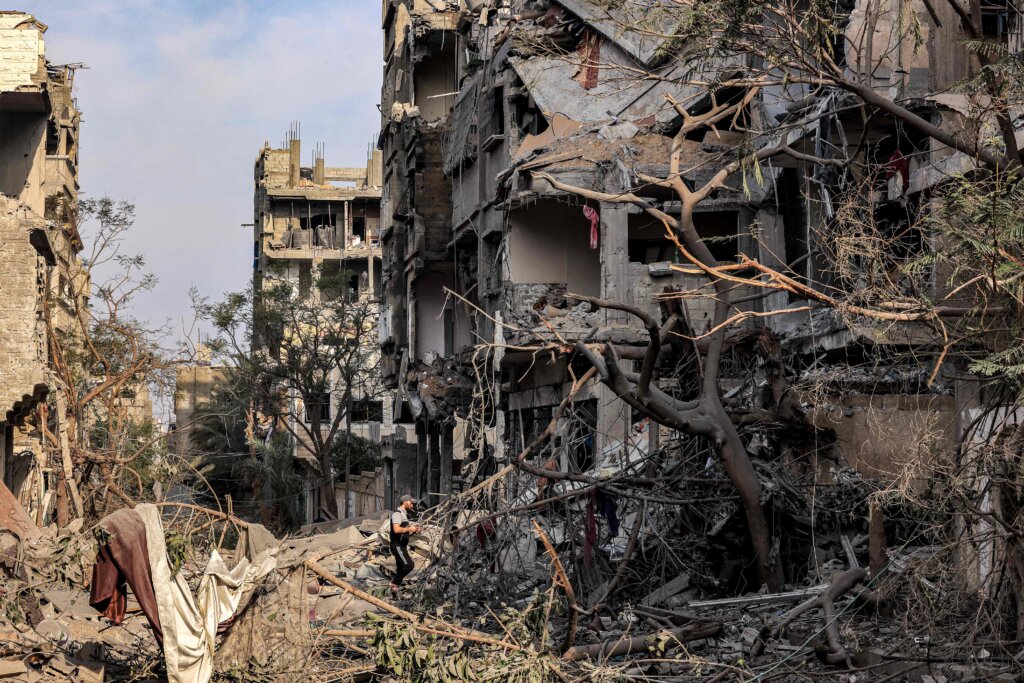
By indirectly and inadvertently allowing Hamas to cement its rule over Gaza, Israel helped the group further entrench itself as an indisputable component of the Palestinian national project.
Even if the IDF were to permanently occupy Gaza at the end of this war — an option politically and diplomatically untenable — the moment it leaves, Hamas would find a way to reconstitute. Remember, the Taliban survived 20 years of U.S. occupation in Afghanistan. Plus, an occupation will always entail some degree of populace resistance, including through violent means.
Unconventional and creative thinking is the only way to stop the massive bloodshed and stabilize the strip. Secretary Blinken stated recently that “there may be a need for some transition period at the end of the conflict.” Before then, greater U.S. and European pressure on the Israeli government to minimize civilian suffering, protect hospitals, and allow for more humanitarian aid to make its way into Gaza could help achieve meaningful outcomes. Vengeance is not a productive military strategy.
U.N. peacekeeping troops, with Arab and international support and participation, could provide a transitional period that stops the war and provides Israel with an offramp. Deploying these forces along Gaza’s borders with Israel to prevent future infiltration and attacks against Israel, and acting as a quasi-government while Gaza rebuilds, could allow for the emergence of a capable Palestinian body that can govern the strip. The U.N. could operate aerial and maritime corridors over the Mediterranean Sea to facilitate the movement of people and cargo, using existing U.N. infrastructure, protocols, and commonly deployed practices after wars and natural disasters.
Many have taken issue with calls for a cease-fire, fearing that it would freeze the conflict, abandon the remaining hostages and allow Hamas to re-attack Israel. But short-term and temporary cease-fires, not localized and inconsistent “pauses,” can allow for negotiations to release more hostages, revision of battle plans, further evacuations of civilians in Gaza and the delivery of desperately needed humanitarian aid. The impending four-day cease-fire is an example of this.
My brother, who works for a British medical NGO in Gaza City and has lost his home, told me that in addition to enduring heart-stopping daily bombardment, his family sometimes had to drink salt water (seawater) and boil grassy plants to sustain themselves in Gaza City. How is his suffering and that of hundreds of thousands of innocent civilians going to help eliminate Hamas?
Thousands of innocent Gazans are paying with their lives for a sin they didn’t commit. Israel and its international partners should actually implement steps that will weaken and eventually marginalize Hamas. The group and its extremist ideology will never be entirely eliminated in a military operation, just like the U.S. could not destroy the Taliban even after 20 years. However, there are practical steps to take that would give Gazans a fighting chance for political self-determination and stability in the strip.
To contact the author, email [email protected].
A message from our Publisher & CEO Rachel Fishman Feddersen

I hope you appreciated this article. Before you go, I’d like to ask you to please support the Forward’s award-winning, nonprofit journalism so that we can be prepared for whatever news 2025 brings.
At a time when other newsrooms are closing or cutting back, the Forward has removed its paywall and invested additional resources to report on the ground from Israel and around the U.S. on the impact of the war, rising antisemitism and polarized discourse.
Readers like you make it all possible. Support our work by becoming a Forward Member and connect with our journalism and your community.
— Rachel Fishman Feddersen, Publisher and CEO









